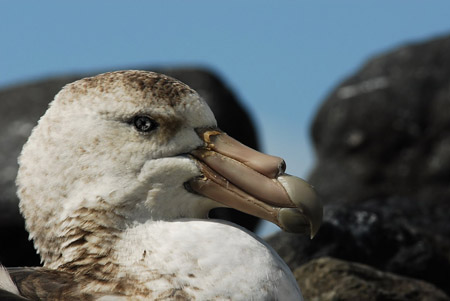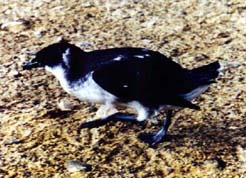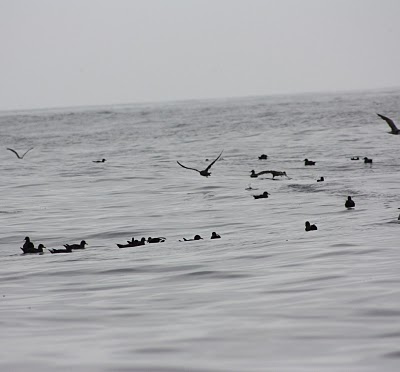Description of the most common species
Waved Albatross
Yellow-billed, white head and a grey-brown body. Almost all of them breed annually to 6 years-old and sometimes 4. Eggs laying in April to June on Galapagos Island (Ecuador). These birds are distributed in the seas of Ecuador and Peru looking for food.
Conservation status is CRITICAL, at high risk of extinction, because the only place in the world where this species breeds and nests is located on the Galapagos Islands. Also the number of these animals is decreasing, currently being threatened by longline and gillnet fishery.
Photos:
http://www.arkive.org/waved-albatross/phoebastria-irrorata/images.html?size=large
Videos:
http://www.arkive.org/waved-albatross/phoebastria-irrorata/videos.html
Southern Giant Petrel
A brown body and a greenish-grey bill. Southern and Northen Giant Petrel are the biggest petrels. This petrel is widely distributed in the southern seas; however the population decreases every year. Its conservation status is of Least Concern. It was placed in this category after reviewing studies from 64 years ago, concluding that the population of these animals has not reduced too much. However, at present this species is threatened by longline and trawling fishery.
Photos:
http://www.arkive.org/southern-giant-petrel/macronectes-giganteus/images.html?size=large
Videos:
http://www.arkive.org/southern-giant-petrel/macronectes-giganteus/videos.html
Sooty Shearwater
Yellow-billed, dark gray body, dark gray wings on both sides, grayish-white belly and white chest. They dive for their food so it is also known as diving petrel. Sooty shearwaters nest on islands of the Pacific, the Atlantic and the Indian Ocean. Conservation status is ALMOST THREATENED, close to being endangered.

Adult of Southern Giant Petrel. L Iliszko.

Adult Peruvian Diving petrel, endemic to the Humboldt Current. Jahncke J.

Sooty Shearwaters Peruvian waters. L Ayala




